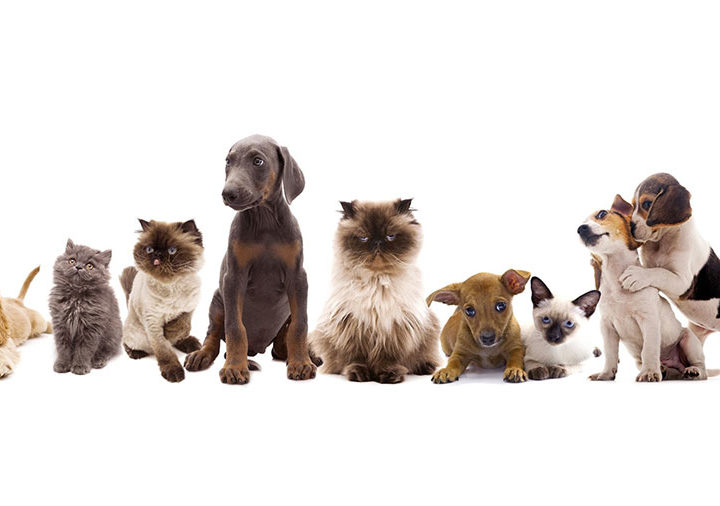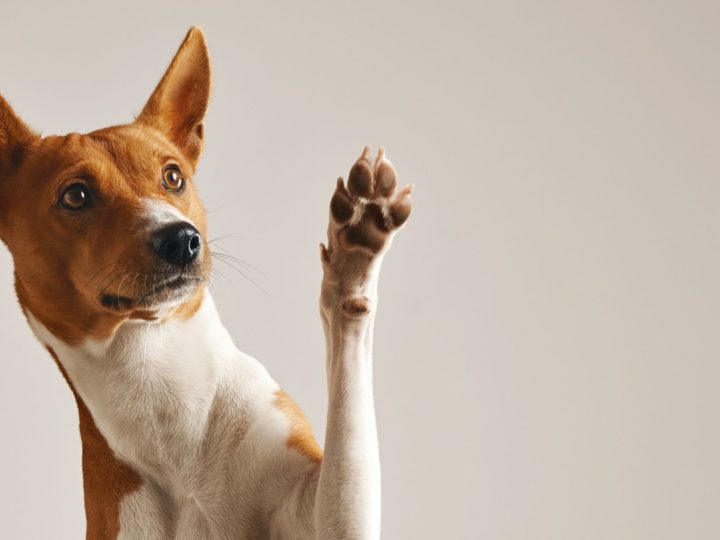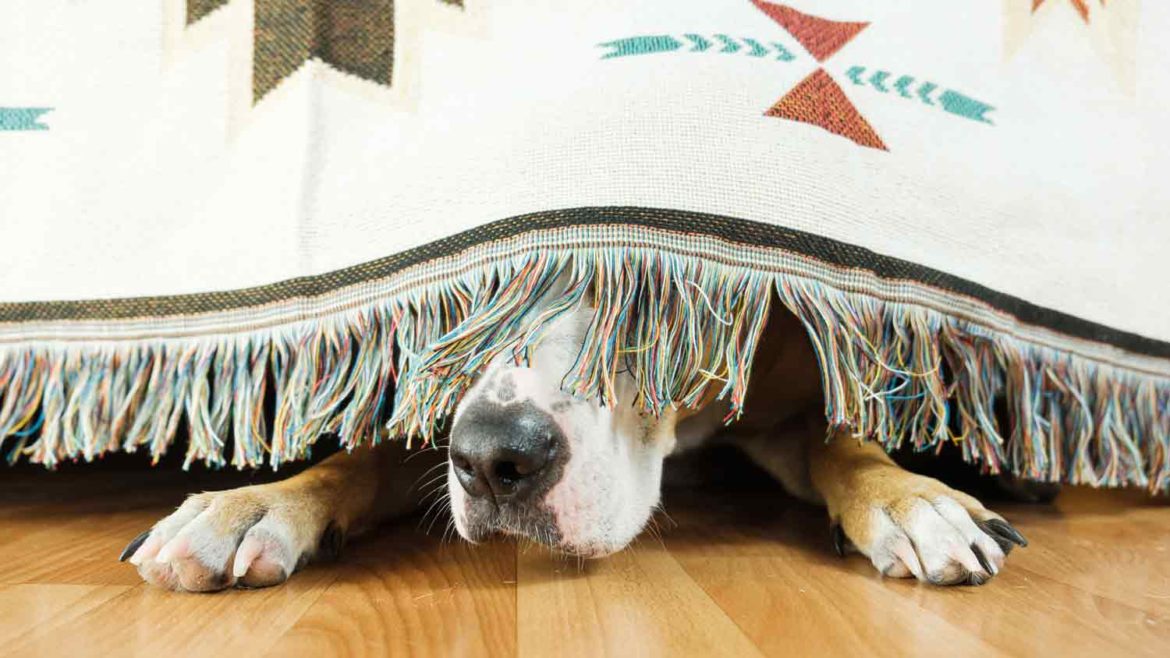
Dogs too, just like humans, can have phobias. Sometimes our life companions experience a strong feeling of fear in relation to some situations, objects, or also activities and people.
Underestimating these phobias is never a good idea. Actually, minimizing the problem could cause a stressful situation in our dog. In the long term, this can lead to create pathologies, an important topic for us of which we have already talked about in this article.
Today, instead, we want to help you find out more about the main phobias of our furry friends, investigating which are the principal ones and consequently how to deal with them together, in order to help them overcome their anxieties. The well-being of our pet is always important.
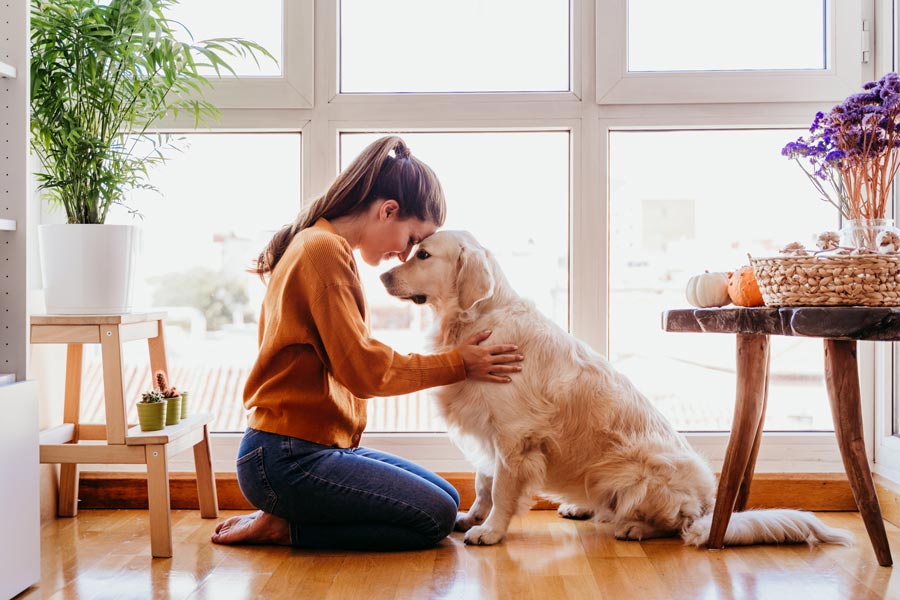
Let’s always take care of our companions.
Signs proving that our dog is afraid
The first essential aspect is observing how our four-legged friend is doing. By learning to recognize his behavior, we should be able to figure out if something bothers him, so that we can provide him support and help.
Here are some behaviors that could make you understand that your dog is afraid:
- runs away and hides himself under the bed, among the covers or behind your legs;
- he’s visibly shaking;
- walks with his tail between his legs and with a tense attitude;
- repeatedly barks at people, other animals, objects or at the house walls;
- uncontrollably reacts with symptoms such as salivation, diarrhea or vomiting.
The most common phobias
Let’s always keep in mind that it’s up to a professional vet the correct evaluation of our dog’s possible phobias, but we can anyway draw up a list of the most common fears among dogs.
Below we’re listing six of them in order of importance from our point of view.
6. Phobia of people
In sixth place we find the fear of people.
Some humans suffer from cynophobia, that is to say the fear of dogs, and as you might already imagine this fear also applies to dogs towards us. It can often derive, for example, from a past trauma, or from a natural growth factor. The positive reinforcement technique, combined with calm and patience, can allow the dog to leave behind bad memories and to start, or to rediscover, the socialization with human being.
5. Car phobia
The car is for us the basis of daily life, anyway for our dog it can be difficult to deal with it. This malaise is more common than we think, whether our pet simply has to get into the car for a trip or he meets it during his walk along the street. Here are some solutions to help him deal with such situations:
- take our dogs in car trips since they’re little puppies, on excursions, jaunts or more simply wherever we go;
- gradually get our puppies used to traffic, rewarding them during the walk when they positively face the situation.
In this way, our companion will associate the mean of transport with a positive experience without fear, the journey will be more simple just as the situation that otherwise could be more complicated to manage.
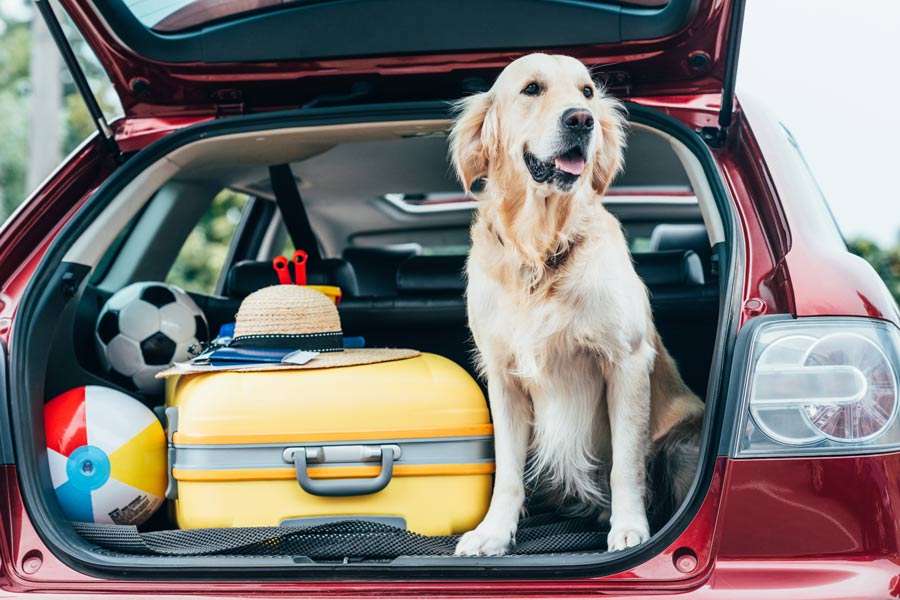
Let’s all get in the car, we go on a trip!
4. Vet phobia
We all know that, taking our pet to the vet is never easy… for him it’s almost always a stressful and constricting experience.
The cause of this malaise can be attributed to the different environment as compared to the serenity of the house: distinct sounds, smells and sensations, but also new encounters with unknown people and animals, can scare him.
Actually, if we think it over, fear begins with the car journey, as if our dog perceives in advance what will await him when we take him to the visit. This could probably come from our behavior towards him and from the attitudes we unconsciously adopt.
Our task, is trying to get him used to regular routine visits, so that he can recognize the veterinary environment as a familiar and safe place, this will certainly make the next experiences more pleasant.
3. Separation phobia
On the third stage of the podium there is… the love between dog and owner.
We know that our loyal friends are really sweet. It’s really hard for them to stay away from us, but it’s mutual, right?
This is why we have the responsibility to educate them (and to educate ourselves) to a healthy and harmonious relationship, making the separation natural.
In fact, is not good neither for the dog nor for us to accustom him always being close to us. There may be moments in which – for example a business trip – we’re forced to leave the house for a few days; in this case, the best solution is to teach him since his tender age not to be afraid of being alone, so that he can learn that we will always come back to him!
i2. Thunderstorms phobia
In second place of this special ranking we find thunderstorms.
Not just for thunders noise, but for something you (maybe) do not expect: static electricity!
This phenomenon leads our dogs to feel a slight tingling on the fur, so they will immediately seek shelter in house areas with less electrostatic charge. Generally, it consists of spaces in which water and humidity are concentrated and make their skin less vulnerable to the electric phenomenon.
To relieve our four-legged friend, it can be useful to relax the environment around him with actions such as:
- isolating the house from noise by closing the windows;
- turning on the TV, or playing with him in order to distract him;
- making his bed comfortable so that he can feel safe;
- chilling out the atmosphere with the scented notes of Emerald, a delicate fragrance by Yuup!
- relaxing him with cuddles and massages.
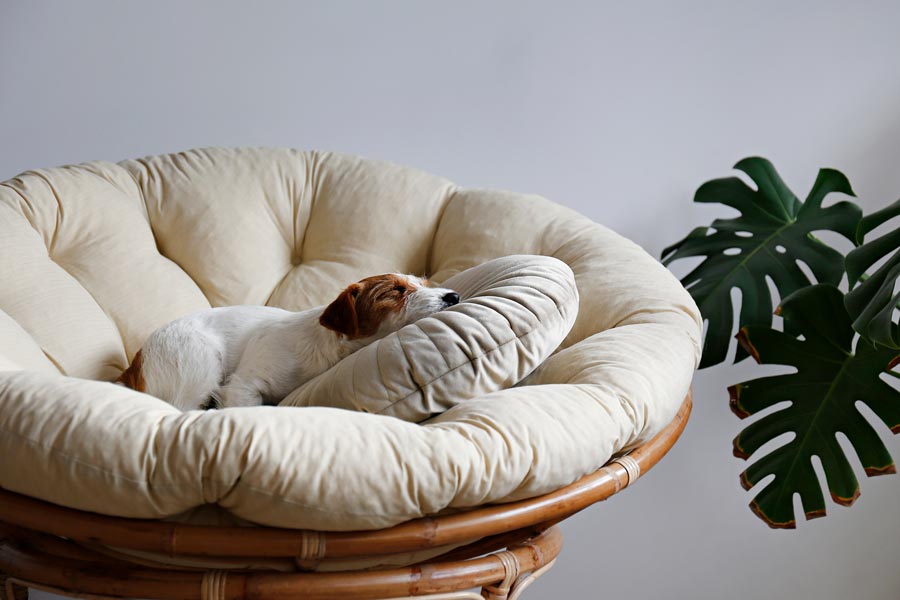
Now I feel good!
1. Fireworks phobia
First place of phobias? It’s certainly not a surprise… it’s the New Year’s Eve fireworks!
As you already know, hearing in dogs is a highly developed sense.
We can therefore easily imagine that a sudden loud noise can represent a good scare; creating in him feelings such as confusion, fear and anxiety, which can lead to hyperventilation, tachycardia and in some cases even tremors.
What can we do to reassure him?
We first need to remember never leaving our pet alone. Cuddle him without exaggerating and try to make him feel safe, in the meantime encourage him so that he can understand that it’s a normal situation.
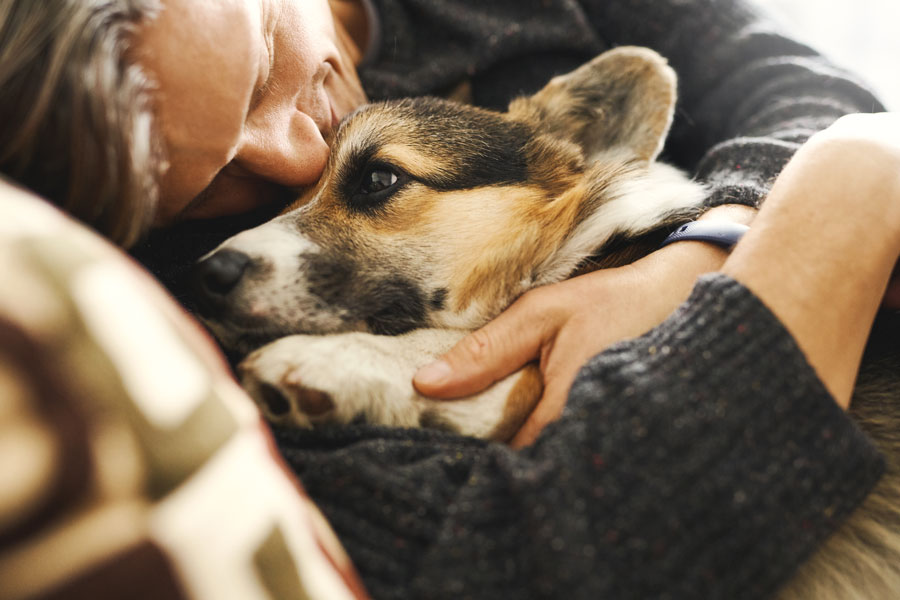
Sometimes our puppies need to feel protected.
In summary, the best antidote for any kind of phobia in your dog is you and your two-way unconditional love.






